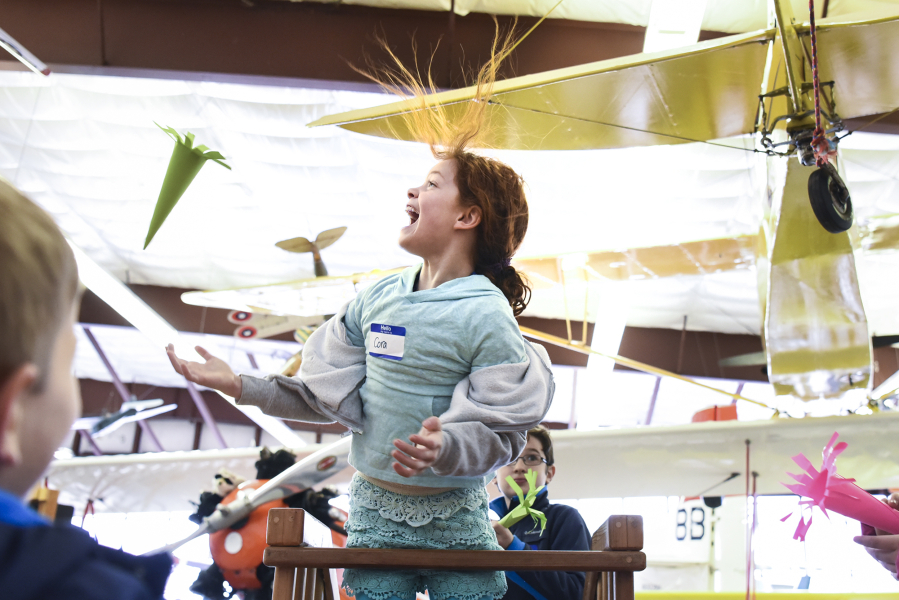As the six children sat around the table, busy with scissors and tape, one started humming a familiar tune.
The “Star Wars” theme seemed to be a fitting soundtrack for the morning’s activity, which was an exploration of science and technology.
The children were taking part in an aviation-education camp inside a hangar at Vancouver’s historic airport, Pearson Field. During winter break, the Pearson Field Education Center is offering the half-day sessions for kids in first grade through fourth grade.
This was not necessarily an introductory session. Several of the children have flown in airplanes, and 9-year-old Annika Morrow sees more of it in her future.
“I want to be a pilot when I grow up,” said Morrow, a fourth-grader at Pleasant Valley Primary School. “My dad says flying is in my blood. My great-grandfather was a pilot.”
Everett Pryor, 9, already knew the four principles of flight: lift, thrust, weight and drag.
But the camp gives children a hands-on opportunity to play with those principles.
“We want to make science fun,” said Garrett Schmidt, director of Pearson Field Education Center. “We want to give them the concepts of science, not get into the academics behind it. If we can coordinate scientific activities with play, that’s when learning happens.”
During that scissors-and-tape activity, the children built whirligigs. They cut the open end of their paper cones, creating petal-like wings that demonstrated the concept of lift when the whirligigs were released over a vertical wind table.
That was the goal, anyway. A camper accurately summed up an unsuccessful launch this way: “Weight is beating lift.”
“Part of this is discovery,” said Schmidt. “Start with a prototype and test it. Then, back to the drawing board.”
To improve his whirligig’s lift, “I made the wings way longer,” said Pryor, a fourth-grader at Roosevelt Elementary.
“I’m getting extra weight off and seeing if it works better,” Morrow said as she lined up at the wind table for another fan-powered test flight.
While the camp leans strongly toward STEM subjects — science, technology, engineering and math — the fledgling aviators have been learning something else that could come in handy.
“Don’t give up,” said 8-year-old Grace Ested, a third-grader at Burton Elementary. She was ready to try out the third version of her project. “Keep trying until it works.”
The second series of sessions will run from 9 a.m. to noon Tuesday through Friday. Cost is $40 a day or $140 for four consecutive days. Register by calling 360-992-1815.
The Pearson Field Education Center is a program of the nonprofit Fort Vancouver National Trust.




